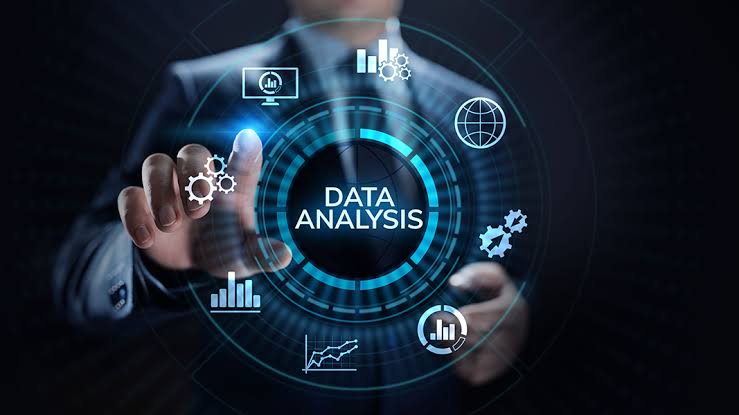Data Analytics Course
Analyze data quickly and easily with Python's powerful pandas library! All datasets included --- beginners welcome
Last updated 11/2024

Data Analyst Course
₹34999
What Module You Learn In This Course
1. Introduction to Data Analytics
- Overview of data analytics and its role in business
- Types of analytics: Descriptive, Predictive, Prescriptive
- Understanding data structures and types
- The data analytics workflow: Data collection, cleaning, analysis, and visualization
2. Data Collection and Preprocessing
- Methods of data collection (surveys, sensors, databases, etc.)
- Data cleaning: Handling missing values, duplicates, and outliers
- Data transformation techniques: Normalization, standardization
- Introduction to data wrangling using tools like Python or Excel
3. Exploratory Data Analysis (EDA)
- Understanding the importance of EDA in data analysis
- Using descriptive statistics to summarize data
- Visualizing data using charts and plots (histograms, scatter plots, box plots)
- Identifying patterns, trends, and correlations in data
4. Statistical Analysis for Data Analytics
- Basics of probability theory
- Descriptive statistics (mean, median, mode, standard deviation)
- Inferential statistics: Hypothesis testing, confidence intervals, p-values
- Statistical tests (t-tests, chi-square tests, ANOVA)
- Correlation and regression analysis
5. Data Visualization and Reporting
- Principles of effective data visualization
- Creating charts and graphs using tools like Excel, Tableau, or Power BI
- Building interactive dashboards and reports
- Storytelling with data: Communicating insights effectively
- Data visualization best practices (choosing the right chart type, color theory, etc.)
6. Introduction to Databases and SQL
- Understanding relational databases and SQL
- Writing SQL queries to extract, filter, and aggregate data
- Joining tables and working with subqueries
- Data manipulation using SQL (INSERT, UPDATE, DELETE)
- Introduction to NoSQL databases (MongoDB, Cassandra)
7. Predictive Analytics and Machine Learning
- Introduction to machine learning concepts
- Supervised learning: Regression (linear, logistic) and classification (decision trees, random forests)
- Unsupervised learning: Clustering (k-means, hierarchical)
- Model evaluation: Accuracy, precision, recall, F1 score
- Hands-on with machine learning libraries (Scikit-learn, TensorFlow)
8. Time Series Analysis and Forecasting
- Basics of time series data and analysis
- Trend, seasonality, and noise components in time series
- Forecasting models: ARIMA, Exponential Smoothing, Holt-Winters method
- Evaluating forecasting models: RMSE, MAE, MAPE
9. Advanced Analytics Techniques
- Working with big data: Introduction to Hadoop and Spark
- Predictive modeling using advanced techniques (Random Forest, SVM)
- Natural Language Processing (NLP) for text analysis
- Deep learning and neural networks for complex data problems
10. Big Data and Cloud Analytics
- Introduction to Big Data concepts: Volume, Variety, Velocity
- Big data tools and frameworks: Hadoop, Spark, MapReduce
- Cloud platforms for data analysis: AWS, Google Cloud, Microsoft Azure
- Working with cloud-based data storage and analytics tools
11. Ethics and Data Privacy
- Ethical considerations in data analytics
- Data privacy regulations (GDPR, CCPA)
- Bias and fairness in data analysis and algorithms
- Security concerns in handling sensitive data
12. Data Analytics Tools and Software
- Introduction to data analysis tools: Python, R, Excel
- Working with Python libraries: Pandas, NumPy, Matplotlib, Seaborn
- Introduction to R programming for data analysis
- Data manipulation and analysis in Excel (Pivot Tables, Power Query)
13. Business Applications of Data Analytics
- Using data analytics in marketing: Customer segmentation, A/B testing
- Financial analytics: Predicting trends, budgeting, and forecasting
- Operations analytics: Inventory management, supply chain optimization
- Healthcare analytics: Patient data analysis, predictive healthcare models
14. Capstone Project/Case Studies
- Applying skills to solve real-world data problems
- Data cleaning, analysis, and visualization on a real dataset
- Building predictive models and presenting findings
- Case study presentations and peer reviews
